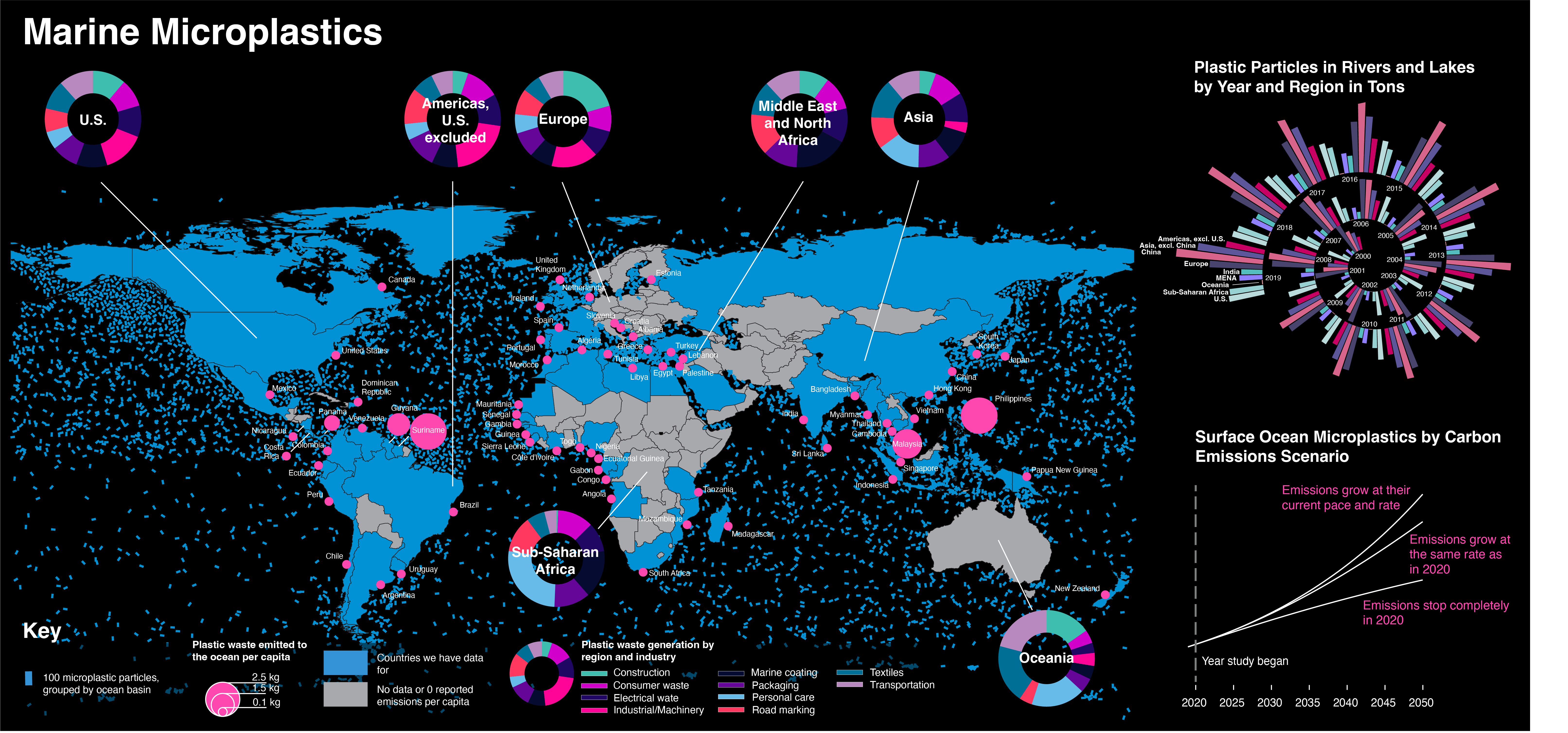Marine Microplastics
Uses: Illustrator, QGIS, R, Excel
I created this poster for an Information Design class at Northeastern University.
According to the University of Plymouth, there are now “trillions of microplastic particles” in the ocean. This plastic can come from anywhere, from industrial processes to physical skin exfoliators. The reason this happens is that plastic can take thousands of years to completely breakdown, so after it is discarded, if it ends up in the ocean, it doesn’t quickly degrade.
Marine animals often consume these microplastics, and it’s been proven to be harmful to many of them. These animals include fish, of whom around 60% are estimated to have consumed microplastics. It’s unclear what effect this has on humans who eat them. However, what is clear is that microplastics are omnipresent in our oceans, and their presence is harmful to marine life.

Sources
“Microplastics in the Surface Ocean.” Our World in Data, ourworldindata.org/grapher/microplastics-in-ocean. Accessed 27 Nov. 2023.
“Plastic Waste Accumulated in Rivers and Lakes.” Our World in Data, ourworldindata.org/grapher/plastic-waste-accumulated-rivers-lakes?tab=table. Accessed 27 Nov. 2023.
“Plastic Waste Emitted to the Ocean per Capita.” Our World in Data, ourworldindata.org/grapher/per-capita-ocean-plastic-waste. Accessed 27 Nov. 2023.
“Plastic Waste Generation by Region and Industrial Sector.” Our World in Data, ourworldindata.org/grapher/plastics-waste-in-2019-by-region-and-application. Accessed 27 Nov. 2023.
Rozsa, Matthew. “Ocean Plastic Pollution Is Filtering up into the Fish That We Eat.” Salon, Salon.com, 7 Mar. 2023, www.salon.com/2023/03/08/microplastics-ocean-fish-seafood/#:~:text=Baechler%20cited%20a%20recent%20review,are%20carnivorous%2C%22%20Baechler%20added.
“Surface Plastic Mass across the World’s Oceans.” Our World in Data, ourworldindata.org/grapher/surface-plastic-mass-by-ocean. Accessed 27 Nov. 2023.